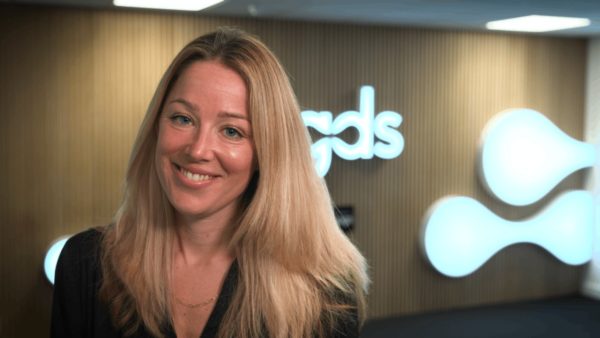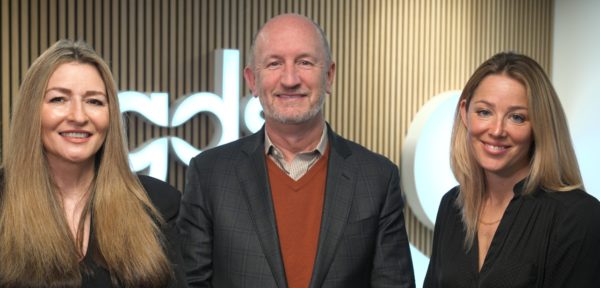Think about digital innovation, and what comes to mind?
Maybe it’s the metaverse or advances in augmented reality. Perhaps it’s digital twins or the internet of things. Hybrid working. Autonomous vehicles. ChatGPT. Robot butlers.
Digital tools are everywhere – and evolving at a pretty rapid pace. According to McKinsey, 127 new devices connect to the internet every single second, with the total number of connected devices hitting 43 billion worldwide this year. And given the current rate of change, even that feels like an underestimate.
But sometimes innovation is about much more than tools, devices and technology. It requires a new way of thinking, a different way of operating. And building that organizational muscle – in order to surface new ideas, develop them effectively and scale them up – is no easy task.
So, what does it take to create the right conditions for success when it comes to innovation? And how do you effect the necessary change in your organizations?
Rally the troops
Ensuring your collective energies are channelled in the right areas is a critical first step. As author and entrepreneur Damon Brown puts it: “You can be the one fighting for a faster horse, or you can be the one getting ready for the motorized vehicle. Both approaches take the same amount of energy.”
As such, storytelling is essential. For Milos Topic, Chief Digital Officer at Grand Valley State University, it starts with getting people engaged in what you’re trying to achieve. “Everything starts with people, with leadership, with what people are willing to tolerate in terms of culture,” he told an audience of senior tech leaders at GDS Group’s recent Digital Innovation summit. “If you don’t have everyone rowing in the same direction, your potential upside is extremely limited.”
“Mindset is the number one barrier to innovation,” added Lee Bogner, Global Chief Enterprise Architect over at Mars. “Other things – such as legacy tech, a lack of skills, cost, etc. – are all just excuses for not getting things done. And while overcoming that internal resistance to change is never easy, it’s definitely where you need to start.”
Eliminate fear of failure
There’s a solid reason Peter Drucker said “culture eats strategy for breakfast.”
According to one executive on a recent Meet the Boss roundtable, the cultural element is essential. “You need to create the right environment and provide people with a safe space in which to test, learn and experiment,” said Ange Johnson De Wet, Head of Cloud-Enabled Business Transformation at Lloyds Banking Group. “It’s about giving them permission to fail.”
After all, the whole point of innovation is to try new things and push boundaries. “If people don’t feel safe doing that, they’ll never come up with new ideas or take the necessary risks to make them a reality,” she said.
Leadership is critical. A recent McKinsey survey found that by setting the tone for the team climate through their own actions, “team leaders have the strongest influence on a team’s psychological safety.” Yet just 43 percent of all respondents reported a positive climate within their team.
“People do have the propensity to change,” said Brandon Milner, VP for Product, UX Design and Professional Services at construction services firm EllisDon, speaking at the Digital Innovation Summit. “But they need to see leaders behaving in ways that embody the values they are trying to encourage in their employees.”
Keep the faith
Culture is important because sometimes you need to take a leap of faith and invest in ideas that may not have results right away – but that could have a bigger impact later.
According to time management expert and author of Off the Clock, Laura Vanderkam, certain things we do in the present can open up space in the future. “These investments of time pay off again and again, much like a stock can pay an annual dividend,” she said at a recent IBM Accelerate event hosted by GDS Group.
Vanderkam’s view is that time spent cultivating a relationship with a client, or researching a particular skillset, or making your body stronger, all share certain similarities: they start small with little reward for the hard work you are putting in, but over time the effort begins to compound, and the rewards begin to outweigh the work itself.
“Time and money are both scarce resources, though scarce in different ways: you can earn more money, but you can’t get back a single second once it’s spent,” she says in a recent blog post. “That said, time pays dividends too. Sometimes you can earn back time because of time spent or choices made in the past.”
And this applies to innovation, too. The effort you put into innovation isn’t going into a vacuum. It’s accumulating, often silently, until over time the difficult work and the minimal rewards start to inverse. Eventually, all that hard work turns into muscle memory – and innovation becomes part of your daily routine.
Culture. Habit. Mindset. Call it what you will: getting innovation right is about much more than just fancy tech.
GDS Summits are tailored three-day virtual event conferences that bring together business leaders and solution providers to accelerate sales cycles, industry conversations and outcomes. 75% of delegates at the last Digital Innovation Summit said the overall experience was above average or excellent, and 75% said the summit provided them with actionable outcomes to support their current initiatives.
If you’d like to continue the conversation at GDS Group’s Digital Innovation Summit – where we bring together senior innovation executives who are actively seeking to share, learn and engage – then we’d love to hear from you. Click here to sign up.










